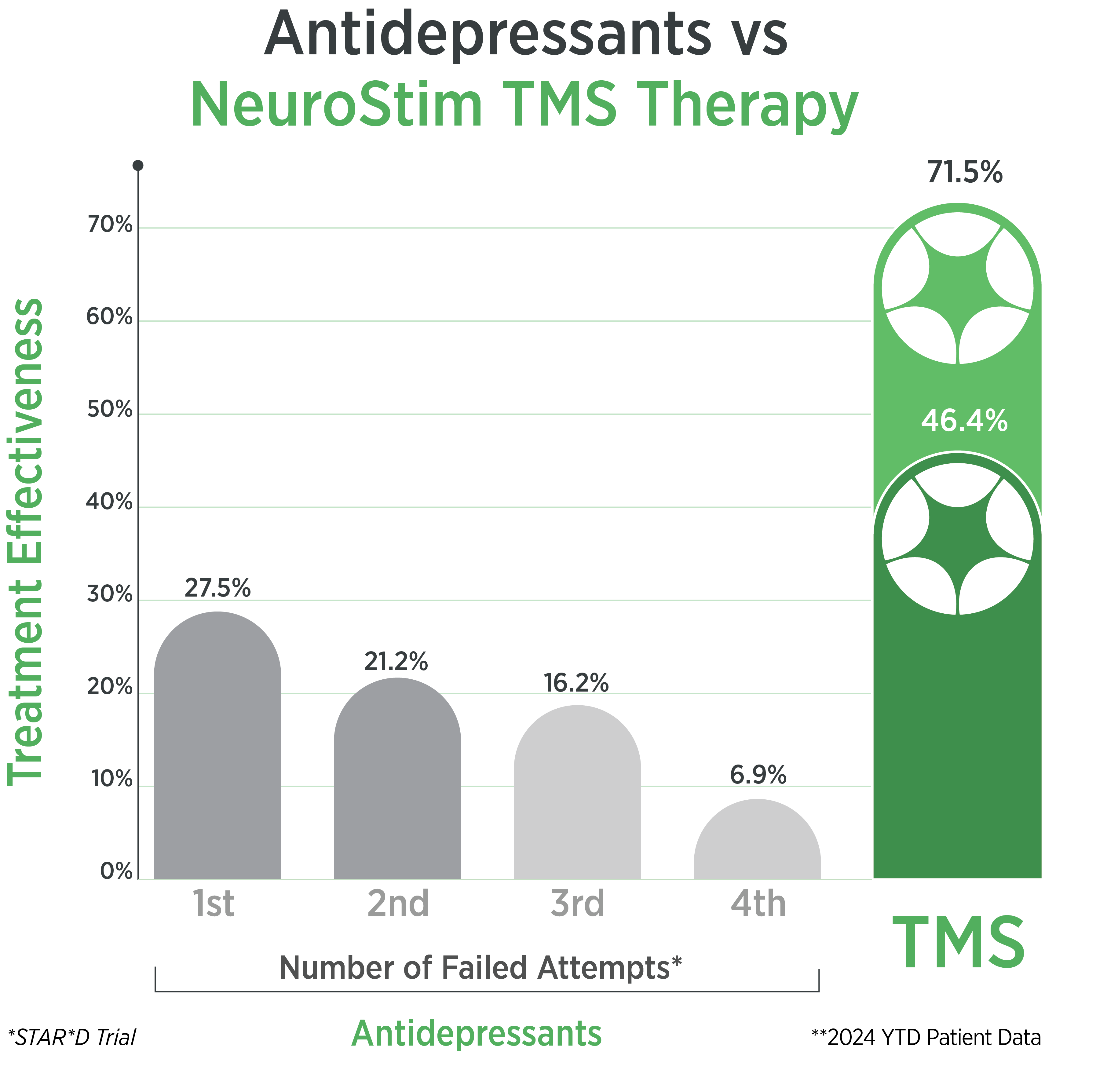MILITARY FAMILIES: THERE IS HOPE FOR PTSD & DEPRESSION
Find Out If You’re A Candidate Today…Start The Quiz Now!

MILITARY FAMILIES: THERE IS HOPE FOR DEPRESSION & PTSD
Find Out If You’re A Candidate Today…Start The Quiz Now!

NeuroStim is Washington’s Leading TMS Provider
#1
Doctor Recommended
TMS Provider
71.5%
Patient Response
or Full Remission
200,000+
TMS Treatments
Administered
16
Convenient Locations
& Growing
NeuroStim TMS is an Effective PTSD & Depression Treatment Without Medication
Transcranial Magnetic Stimulation (TMS) is a medical breakthrough for treating Major Depression, PTSD, OCD, Anxiety, and other disorders. TMS is a highly effective, FDA-approved, proven and non-sedating treatment for patients who haven’t responded to antidepressants or other treatments.
[VIDEO] 20-year military veteran shares how TMS helped him overcome his PTSD.
NeuroStim TMS is Covered by TriCare & Major Insurance Plans
NeuroStim TMS Centers are considered In-Network providers for most insurance plans, including TriCare, VA/TriWest, Premera Blue Cross, Regence, United Healthcare, Aetna, Kaiser, and others. Real hope is just a few clicks away, so get the help you need with the insurance coverage you already have by getting in touch with us today.













What Makes Us Different?
- #1 Doctor Recommended TMS provider
- Industry Leading TMS Doctors and Staff
- Specializing Exclusively in TMS Therapy
- 71.5% Achieve Significant Improvement
- 46.4% Achieve Full Remission
- Theta Burst & Accelerated TMS Leaders
- Treating 300+ Daily Patients
Across All Our Locations - Customized Patient Care
Using the Latest Technology
Find Out if You’re a Candidate Today
Find out if you’re a candidate for an FDA-approved treatment for military patients who haven’t responded to antidepressants and other treatments. Take the free quiz and discover whether this medical breakthrough TMS therapy can improve your life too.
Find Out if You’re a Candidate Today
Take the free TMS quiz and find out if you’re a candidate for an FDA-approved treatment for military patients who haven’t responded to antidepressants and other treatments. Take the free quiz and discover whether this medical breakthrough TMS therapy can improve your life too.
